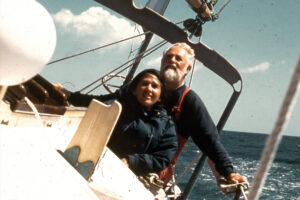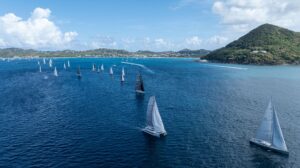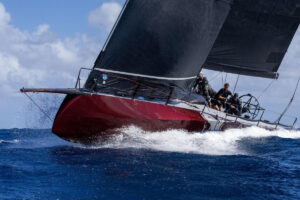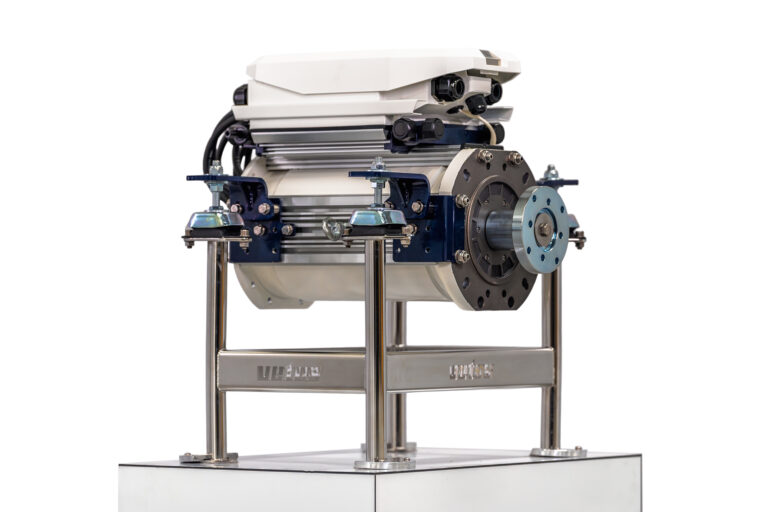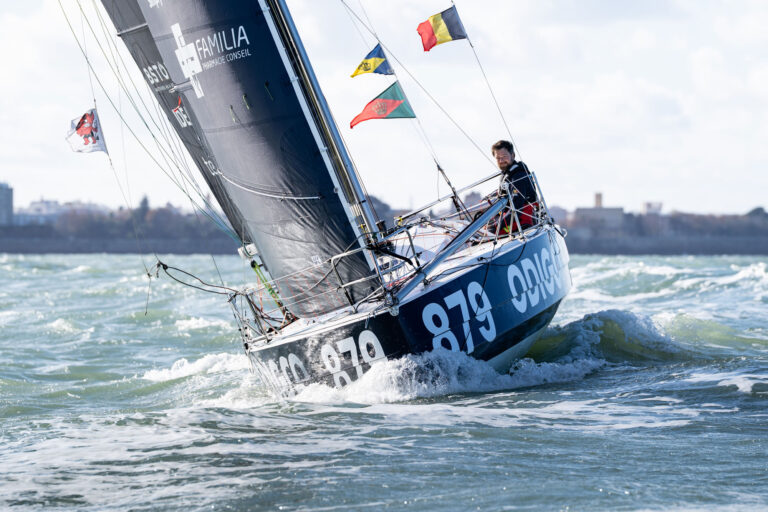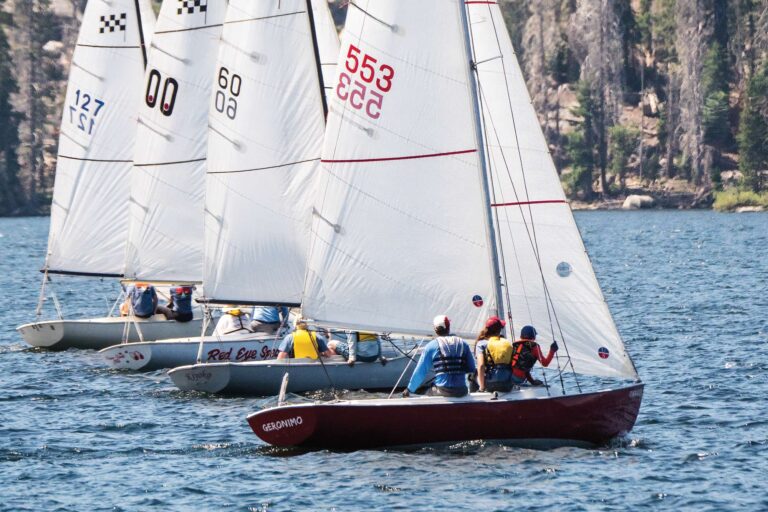The Nonsuch 30 was the idea of Canadian yachtsman Gordon Fisher. He and yacht designer Mark Ellis approached George Hinterhoeller to build this unique cruising catboat. Introduced in 1978, it gained wide acceptance in Canada and was soon popularized in the United States. Production ceased in 1994, with more than 500 hulls produced.
Ellis modified the traditional catboat hull, giving it a finer entry and carrying the maximum beam farther aft. Underwater, the fin keel and partially balanced spade rudder largely eliminate the considerable weather helm common to most catboats. And while the plumb bow and stern, distinctive sheer, and highly cambered coachroof also characterize the Nonsuch 30, its most prominent feature is the tall, tapered, unstayed mast with a wishbone boom.
Both the hull and deck are fiberglass composites cored with end-grain balsa. The deck lands on an inward-facing flange on the hull. The joint is through-bolted, sealed with butyl tape, and capped with an aluminum toerail. The external lead keel is attached with stainless-steel bolts that pass through floor timbers to distribute the loads throughout the boat’s hull.
Since there’s no mast in the cabin and the nearly 12-foot beam is carried well toward both ends, the Nonsuch 30 has much more interior volume than its length would suggest. For the first five years of the boat’s production, the cabin was laid out with opposing settees forward with a drop-leaf table between, a workable L-shaped galley, a large head compartment with shower, and quarter berths aft; the starboard one is a double. From around 1983, an optional cabin layout, called the “Ultra,” offered a stateroom with a double berth forward. The galley was to port, and the head compartment to starboard and the quarter berths were eliminated.
The sail is handled from the safety of the large cockpit. Running rigging consists of a main halyard, a mainsheet, and a choker line, which controls the fullness or flatness of the sail by adjusting the fore-and-aft position of the wishbone boom. The mast tends to bend to leeward when the wind freshens, which spills the wind from the sail and keeps the boat from being overpowered. Along with the wide beam and a 39-percent ballast-to-displacement ratio, this makes for a stable and forgiving boat.
The Nonsuch 30 won’t point as well as a sloop, but allowed to fall off a bit, it will make up for that with much greater speed: 7 to 8 knots in 15 to 20 knots of wind. The boat’s best point of sail is a beam to broad reach.
Up to about hull number 125, a 23-horsepower Volvo MD11C diesel and saildrive provided auxiliary power. Later hulls received a 27-horsepower Westerbeke diesel and a conventional prop shaft. While both engines deliver adequate power, the later installation runs quieter, smoother, and is less prone to corrosion.
The Nonsuch 30 is a coastal cruiser. The generous cockpit and lack of a proper bridgedeck could cause some concern when a skipper considers extended offshore sailing, but its shallow draft and well-ventilated interior make it an ideal thin-water cruiser.
The rig is very simple, and there are few things to break. In addition to age-related problems typical in older boats, some areas to watch out for include the gate valves used as seacocks and cracks in the aluminum mast fitting where it passes through the deck.
Asking prices for Nonsuch 30s range from $35,000 to $85,000. With one sail, one halyard, and one sheet, it’s one easy boat to sail, especially for a shorthanded crew or a singlehander.
Gregg Nestor, who’s had a lifelong interest in all things aquatic, is the author of three books about sailboats.
Specs
LOA 30′ 4″ (9.24 m.)
LWL 28′ 9″ (8.76 m.)
Beam 11′ 10″ (3.61 m.)
Draft 5′ 0″ (1.52 m.)
Sail Area (100%) 540 sq. ft. (50.16 sq. m.)
Ballast 4,500 lb. (1,372 kg.)
Displacement 11,500 lb. (5,215 kg.)
Ballast/D .39
D/L 216
SA/D 17.0
Water 80 gal. (302 l.)
Fuel 30 gal. (113 l.)
Engine 23-hp. Volvo
w/ saildrive or
27-hp. Westerbeke
Designer Mark Ellis
Designer Ted Irwin

